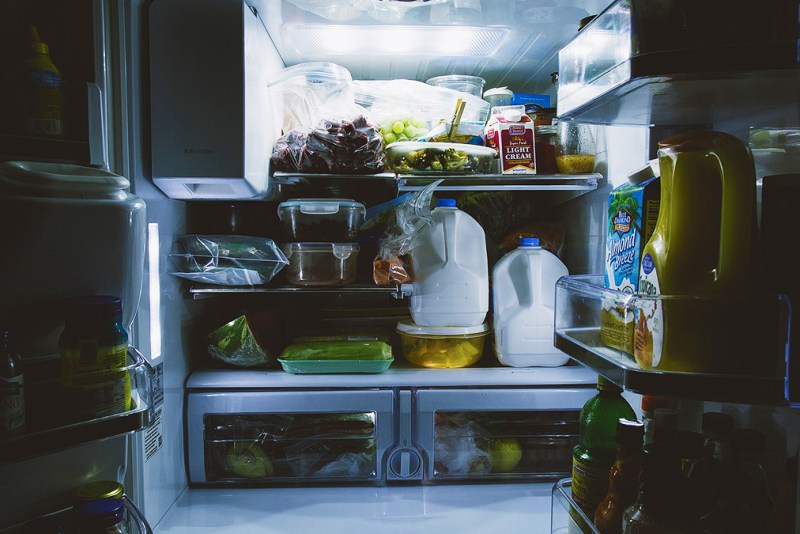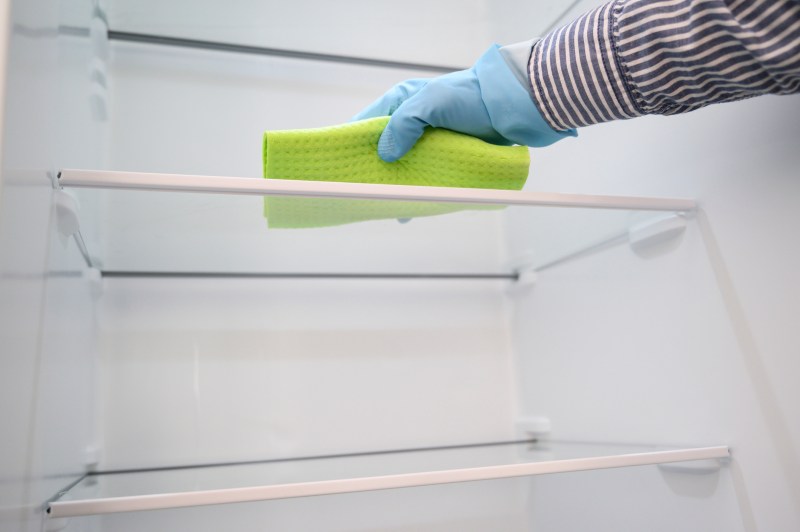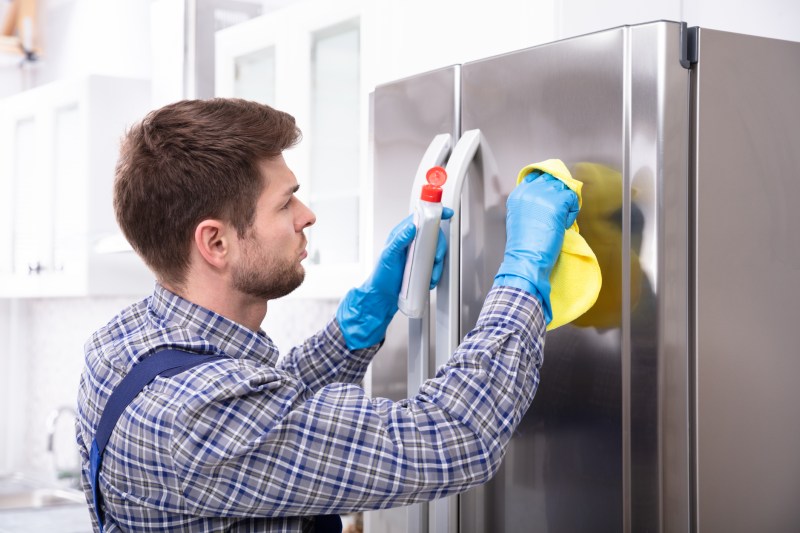A good fridge is a well-used one, sure, but it's also clean. When it's messy, it's a drag and only worsens until the problem is fixed. With so many potential spills, leaks, and residues in there, why not clean it right and keep it that way?
Don't forget that while it's cool in your refrigerator, it's also usually dark and home to a lot of living — or at least perishable — items. That means it's a potential breeding ground for mold and other unwelcome, potentially sickness-causing guests. Anybody who has left on a trip in a hurry and failed to check the fridge before departure knows as much.
Cleaning a fridge seems like a massive endeavor most of us would like to avoid but in reality, it's not so bad, especially if you keep on top of things. Here are a few suggestions to support you through the process.

How to Clean Your Fridge
First things first, you should probably do a standard clean at least bi-monthly and a deep clean every six-to-eight months. No matter which version you're doing, unplug the fridge beforehand. The alarm gets annoying fast and there's no reason to let all that cool air out of the open doors. Next, empty it out. For a standard clean, just take out the things that most likely to drip (open milk, juice, leftovers). For a deep clean, get it all out of there, you'll want to gain access to every bit of surface area.
A regular clean doesn't require more than hot water and some soap. If there are problem areas (spills or other significant build-ups), soak them with wet rags for a spell while you work on other sections of the fridge. A quick soak will loosen things up and make them easier to clean.
With a deep clean, throw a little bleach in the mix or couple your soapy water scrub with some all-purpose cleaner, making sure it's food safe (there are special products for this). If you want something easy to whip up at home, just mix up some water and vinegar (1:3 ratio) and use that to clean. Just be sure to scrub it down with some hot water afterward.
Don't forget the exterior. Use something soft on your stainless steel and, during a deep clean (or if you have children or just don't like germs) consider sanitizing the handles and most-frequented parts of the outside with an ethanol solution or similar. Establish a regular cleaning regimen, even if it's a light one. An easy approach is to simply wipe things down and access the general state of the fridge every time you unload groceries.

Use the Right Tools
You don't need much to clean a fridge but a few items will make things much, much easier. A sponge is great for most of the interior, just be sure to designate it as a fridge sponge and don't mix it up with your dish sponge. A wiper is great for cleaning flat and clear areas as well as collecting any leftover cleaning moisture. Also, have some microfiber cloths handy for more sensitive parts of the fridge.
A coiled brush of some is helpful, too, especially for hard-to-reach areas like underneath the appliance. A vacuum or Dust Buster can be quite useful here too, especially early on when you're just looking to get the crumbs out of the way prior to any scrubbing. A small scraper can be of use especially in the freezer where you may need to plunge in and pretend you're The Alpinist and deal with some tricky ice areas.

Hidden Areas
Your fridge has more going on than you might think. Remember that if it's on the newer end, it likely has a water filter. Check your manual about cleaning that, something you should probably do about every deep clean. Of course, there's underneath the fridge, a scary area you might not even want to look at (hence the elongated brush), but very much worth cleaning as stuff likes to collect there and can attract bugs or mice.
Also, examine the internal light fixture to make sure it's nice and clean to maximize visibility. Clean out any gunk near dials as well so that you can properly control the temperature of both the fridge and the freezer. If your fridge has a water and/or ice dispenser, clean that, too. A toothbrush is ideal for cleaning those kinds of spouts and can scrub off any remnants with relative ease.
More Tips
The best advice we can give is to clean your fridge fairly often. Not weekly, but consider monthly or thereabouts if your fridge gets a lot of use. A little cleaning here and there is often much easier than a deep clean once a year. As the CDC rightly recommends, also clean your fridge thoroughly anytime you've had a food recall. This goes for all the goods and shelf space the tainted foods made contact with as well.
While most shelves are plastic these days some are glass. If you do clean these, allow them to warm up a bit on your kitchen countertop prior to cleaning as they could crack going straight from the fridge to the hot water treatment.



